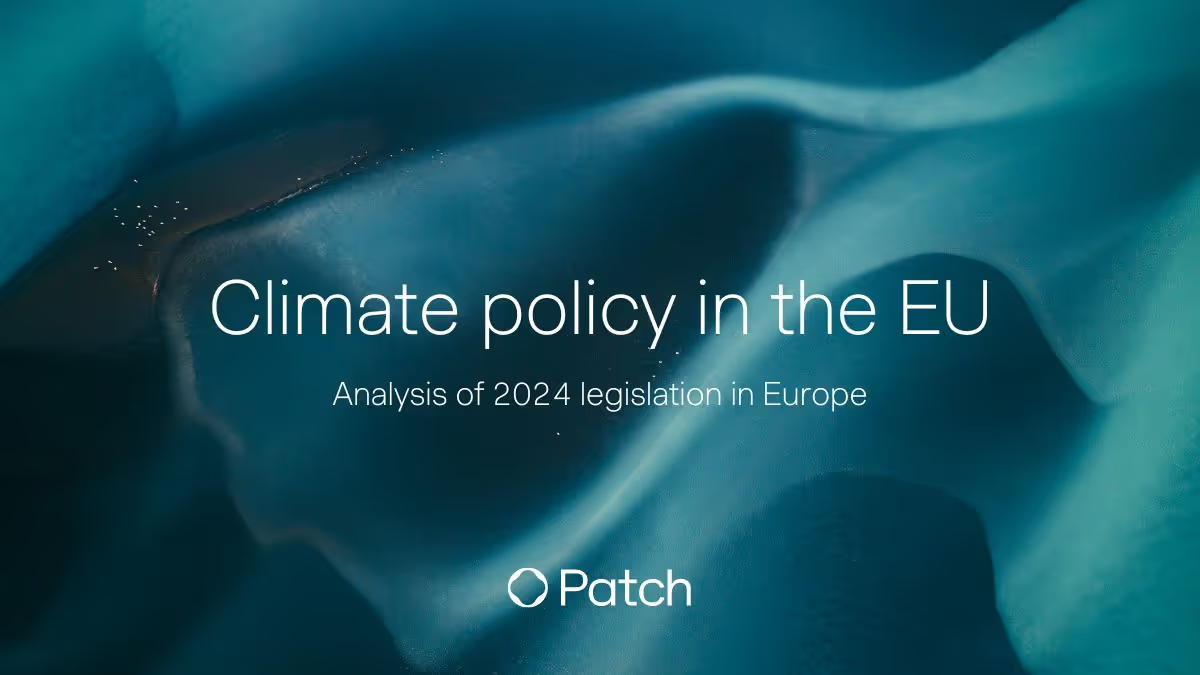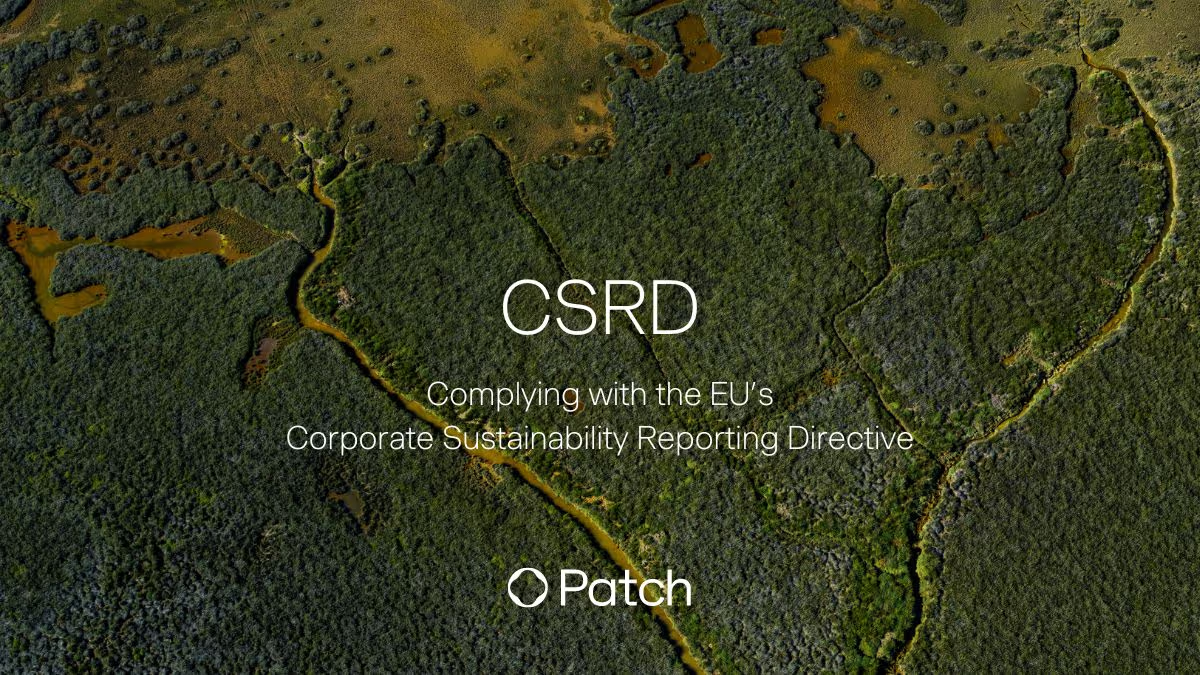Key points:
- The EU has updated its standards for sustainability reporting. The changes will likely affect more than 50,000 companies, many of which will be expected to submit reports by 2025 or face heavy penalties.
- The EU is in the process of updating its rules for both climate related claims (such as carbon neutral or net-zero) and carbon credits in an effort to harmonise them and provide clarity for corporates, but many questions remain around how carbon credits will be allowed to be used in a claim.
- Even though the EU has some of the most developed climate legislation in the world, it will need to more effectively balance incentives and penalties in order to meet its aggressive 2040 targets.
The European Union (EU) has announced its 2040 targets of 90% net carbon emissions reduction by 2040 and is seizing carbon markets with both hands. They plan to lead by example, but can they take people with them?
Spring 2024 is shaping up to be a pivotal time for climate policy in Europe. Here’s what you need to know:
The current state of climate policy in the EU
The EU has some of the most developed climate-related legislation in the world, with policies being implemented as far back as the early 90s. Concerning carbon markets specifically, the EU established its landmark emissions trading scheme in 2005, the Emissions Trading System (ETS), making a firm bet on markets to drive down carbon.
It was conceived as a cap and trade scheme to give companies in specific industries a set number of CO₂ allowances that decrease each year in line with the EU's targets. Companies can buy or sell allowances according to their decarbonisation progress on the EU carbon market, and must pay fines if their emissions exceed their allowances.
Despite some setbacks, the scheme continues to expand — with shipping just added and agricultural emissions now under review — and is revered as a model to be replicated around the world; it has helped drive down emissions from energy use and industrial production in the EU by 37% since inception.
The Corporate Sustainability Reporting Directive
But for corporates operating outside compliance markets like the ETS, the EU has once again taken a bold step. In 2020, they introduced the Corporate Sustainability Reporting Directive (CSRD), and last year set out 10 technical substandards (the European Sustainability Reporting Standards) relating to Environmental, Social and Governance practices, requiring detailed disclosures ranging from their material impact on the climate through to how they will use carbon credits. Large companies’ first CSRD report will be due in early 2025 based on the company's 2024 fiscal year environmental performance. Small and medium enterprises (SMEs) must begin reporting in 2026 using the CSRD's streamlined SME guidelines.
It’s estimated that more than 50,000 companies will be covered by the obligations. This includes all financial firms that trade in EU-issued securities, regardless of where they're located. Individual member states will determine penalties for non-compliance, provided they’re “effective, proportionate, and dissuasive.” France has already transposed the legislation, with severe sanctions including fines and even imprisonment.
This reporting requirement is arguably the strongest “stick” in existing climate policy, alongside the bloc’s crackdown on greenwashing.
Analysis: Overall, the proposed changes aim to strike a balance between reporting requirements and practical considerations, but concerns remain about potential compromises to the quality and effectiveness of reporting. The European Commission plans to adopt additional delegated acts for industry-specific standards and requirements in the future.
Patch can assist companies by helping them develop meaningful contribution or compensation strategies incorporating carbon removal. Patch also provides a centralised and normalised source for data points on credits, streamlining the reporting process and ensuring accuracy and consistency in reporting.
The Green Claims Directive
Under its climate standard, the CSRD compels disclosures around emissions, decarbonisation, and carbon credits. But what about the claims corporates are making voluntarily about their climate actions?
In February the European Parliament voted overwhelmingly in favour of the Green Claims Directive. It’s a complement to the EU ban on climate related marketing on products and services (the Empowering Consumers Directive) which prevents, for example, the use of climate neutral or planet friendly claims on consumer packaging.
The purpose of the Green Claims Directive is to define under what circumstances a corporate can make an environmental claim and what information they need to provide to back it up. It also lays out detail on what penalties will be faced if a claim is false.
Here are three key new inclusions in the Directive:
- Companies must submit environmental marketing claims to accredited verifiers for verification before using them
- Simpler and common types of claims will benefit from easier or faster verification
- Penalties including exclusion from procurements, confiscation of revenues, and a fine of 4% of the annual turnover
This policy intersects with carbon markets by also delving into how companies can use carbon credits to achieve their climate targets (under Amendment 6, the section on Offsetting). The Parliament’s position is that carbon credits should only be used for residual emissions (the exact meaning of which is not yet defined) and they need to follow the “like-for-like” principle. In other words, only removals with similar warming impact and durability can be used to compensate for emissions. Since fossil fuels, for example, were extracted from permanent, geological storage, only removals with permanent storage could be used to offset those emissions — not, for example, soil or forest-based sequestration.
Analysis: Key questions remain: for example, how will the law define “residual” emissions, and will this definition differ sector by sector? Whilst the Green Claims Directive could be a big win for engineered removals, that depends on how restricted the overall use of carbon credits will be. As for emissions reduction credits and land based removal credits, they are valid categories under the Carbon Removal Certification Framework (CRCF), so the big questions for corporates right now are: how can these credits be used? These credit types are market-ready and play a valuable role in sequestering carbon right now, and we know that politicians, NGOs, suppliers and purchasers alike do not want to see this sector ignored. We anticipate greater clarity in precisely how the private sector can go about supporting this market, perhaps through a convergence with the nascent market in biodiversity credits.
The Green Claims Directive still has to go through a plenary vote in March. We expect to see a more final version of the Green Claims Directive by April 2024, though it won’t be formally adopted until autumn, after the European Parliament elections in June.
The Carbon Removal Certification Framework
The Green Claims Directive refers in Amendment 6 to the CRCF, which is also going through the EU legislative process right now. The CRCF is a major regulatory undertaking to drive high integrity and consistency in the voluntary carbon market (VCM). It will ultimately rubber stamp the VCM as a credible route for investing in carbon removal.
The framework categorises carbon credits into three distinct groups:
- Permanent industrial storage
- Carbon farming (further broken down into emissions reduction and temporary emissions removal)
- Long term storage in products
It also plans to define approved methodologies, laying out a path for certification for each approach, and avoiding double counting through the use of a single EU registry. Initially only credits certified under the CRCF will be able to count towards Nationally Determined Contributions and EU climate objectives, but this will be reviewed in 2026.
The path ahead for the CRCF should be similar to the Green Claims Directive, with a final version ready by April, including a timeline for implementation, and formal adoption later in the year.
Analysis: Whilst it’s very encouraging to see this commitment to the market, a regulation-heavy route will bring its own challenges. For example, it could take until 2026 or even 2027 to develop the different methodologies under delegated acts, creating uncertainty for project developers and favouring some technologies over others. Should the development of protocols be under the purview of lawmakers, or is that an unwieldy process that will restrict innovation and iteration in technology development and protocol enhancement?
One view is that it might be better for the EU to set the framework, but to leave specific protocol development in the hands of registries, who are experts in their area — agile and able to respond to learning and evolutions in technology or monitoring and reporting practices.
Fortunately, a recent addition to the CRCF is that credits certified under other recognised high-integrity schemes (such as ICVCM’s Core Carbon Principles) will be valid under the CRCF — presuming they are European based — which will ease concerns about creating more friction in this global market.
An outlook on corporate climate policy in the EU
So where does this leave us with the EU’s stated goal of 90% Net Carbon Reduction Emissions by 2040? The combination of ambitious targets and strict regulation at EU level is laudable given the scale of the challenge we face, but it is a route that is vulnerable to political sways and public opinion.
As we’ve seen with the scaling back on reduction targets for agriculture as a result of pressure from the farming and landowing communities across the bloc, too tight a squeeze could lead to a backlash against climate action. Moreover, the implementation of a carbon border adjustment mechanism (which came into action in January this year) will further add to the pressure on European industry as they become vulnerable to more competitive markets.
And unlike in the United States where the Biden administration has followed a path of incentives, there is no tangible plan on the table to actually deliver on the 2040 targets. Even beyond the $500 billion in the White House’s three signature laws, the U.S. Department of Energy is offering a $35 million Carbon Dioxide Removal Purchase Pilot Prize to reward up to 10 teams developing innovative carbon removal technology. Those American incentives — combined with the California disclosures legislation that could by proxy affect far more than just Californian companies — present a blend of both “carrots” and “sticks” to provide a path to sustainability, as well as a push to do it.
That’s what it will take in Europe and around the globe to rebalance the planet: not just compulsory motivation, but an accessible route to more investment in climate. The EU has gone further, faster than other bodies (such as the U.S.’s Securities and Exchange Commission), but it must also stay focused on the ultimate target: 90% net reduction by 2040. To accomplish this outcome, carbon credit buyers and suppliers cannot waste even a year waiting for more guidance, or see activity stymied by attempts to design perfect regulation. We need agility and action, now.
That’s where Patch can help. Reach out to us for help navigating the VCM amid these new guidelines, and subscribe below to stay on top of the latest policy developments in the EU and around the world.






